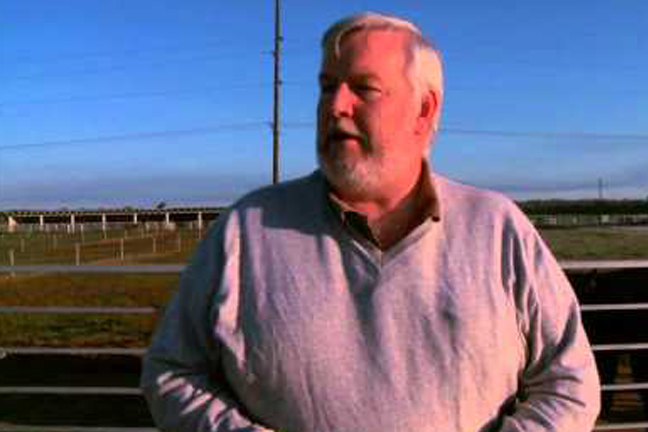
Agricultural News
Feedlot Efficiency Doesn't Equate to Beef Industry Efficiency, Peel Says
Fri, 28 Dec 2012 14:25:21 CST

In his latest article in the Cow-Calf Newsletter, Derrell S. Peel, Oklahoma State University Extension Livestock Marketing Specialist, suggests that an "apples to apples" comparison shows using grain to grow beef is not nearly as inefficient as once thought.
Increased demand for corn has increased corn prices which causes changes in both supply and demand to restore corn market balance. On the one hand, high corn prices stimulate increased corn supply by bidding more resources into corn production. This leads to many impacts in other crop markets, such as higher prices for all major crops. At the same time, high corn prices reallocate corn among various users with higher prices moving some corn away from previous users and into the new demand. In short, high corn prices encourage corn users to reduce use and the beef industry is no exception.
It is often noted that beef is the least efficient user of grain among livestock industries. Indeed, cattle finishing requires five to six pounds of grain per pound of meat produced compared to less than three pounds for pork and less than two pounds for broiler production. However, this is only during the finishing phase and does not consider the amount of grain relative to the total weight of the animal. For example, a 600 pound feeder animal fed to 1350 pounds means that 56 percent of the total finished weight is completed in the feedlot with grain. Using a 5.5 pound feedlot conversion means that 4,125 pounds of grain are used to produce the animal, which is an overall grain use of 3.06 pounds of grain per pound of finished weight. Recognizing this alone means that beef is not nearly as inefficient compared to pork and poultry as the feedlot portion alone would suggest.
Moreover, the beef industry has the ability to adjust the industry production process while maintaining carcass quality and meat characteristics. For example, by increasing the placement weight to 850 pounds, the feedlot phase now represents 37 percent of the total final weight (1350 pounds) of the finished animal. The larger (and probably older) animal will have a higher feedlot conversion, perhaps 7 pounds of grain per pound of gain. In this example, the total amount of grain used to produce the finished animal is 3,500 pounds of grain, down 15 percent from the light weight placement above. Total grain use for the industry is now 2.59 pounds of grain per pound of finished animal despite the fact that feedlot conversion is higher when feeding an animal placed at a heavier weight.
The examples presented here are generalized and do not include all the details of animal production but do illustrate the basic concept and several important implications for the beef industry. The beef industry can respond to high grain prices by changing the industry production process so that a higher proportion of total animal weight is achieved with forage based production prior to feedlot finishing. It also means that the technical efficiency measure of feedlot conversion is not the appropriate measure of industry efficiency with respect to grain use. As feedlots feed animals placed at heavier weight, feed conversion on a per-pound of gain basis will increase but overall industry use of grain will decrease. For many years, cheap grain meant that anything that enhanced grain use and feedlot measures of technical efficiency were consistent with industry efficiency. This is no longer true. Industry efficiency must be measured across the entire industry and not just in the feedlot sector.
WebReadyTM Powered by WireReady® NSI
Top Agricultural News
More Headlines...




















